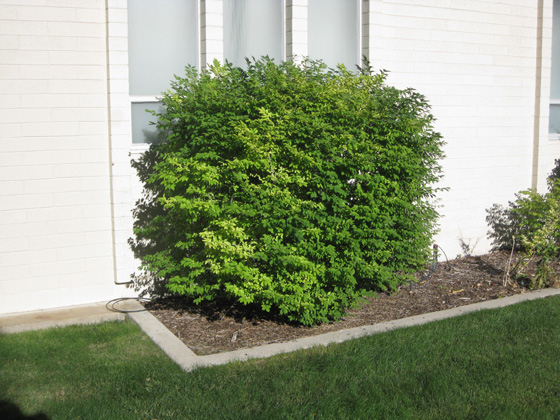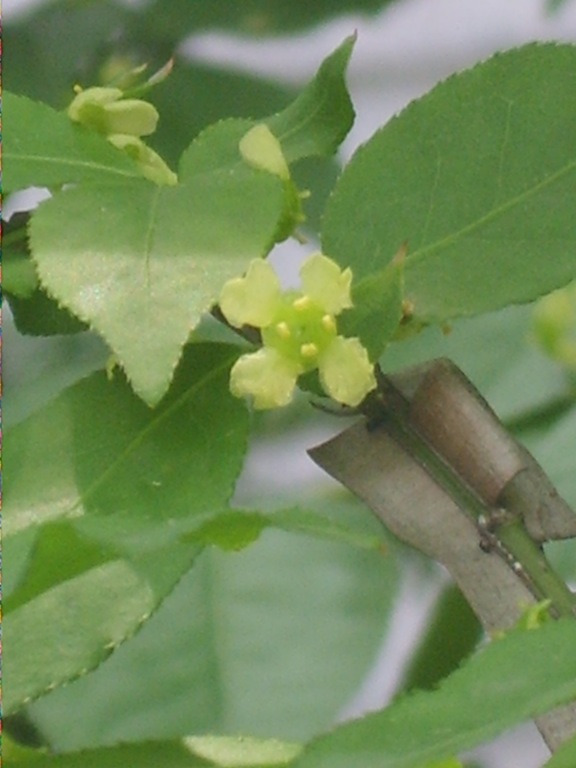| PSC 2620: Woody Trees and Shrub | Course Home | Week 3 |
Euonymus alatus 'Compactus' - Dwarf Burning Bush
Plant Viewer
 |
 |
| Burning Bush is famous for its bright red fall color. | It is a medium to large shrub. If left unpruned it will form natural horizontal layers within the foliage. |
 |
 |
| The leaf is elliptic, 2-3 inches long, and can very from dark green to a more lime green. It is arranged oppositely on the stem; do not confuse it for a pinnately compound leaf. | Small green flowers are inconspicuous. The stems have corky 'wings', protrusions from the stem that are especially noticeable on 1-3 year old growth. |
Plant Description
Burning Bush is a ubiquitous plant in the modern landscape. It seems hard to find a modern garden that doesn't have at least one, and nearly impossible to find a commercial landscape devoid of them. A sturdy and modestly attractive plant, its popularity its due almost entirely to its great bright fall color. Burning bush is very tolerant of many different climate conditions, but for best fall color it should be planted in a mostly sunny condition and pruned lightly.
While the species grows very large (up to 20 feet tall), the most commonly used and available cultivars are much smaller. Compactus can grow 5-10 feet tall, though normally it is reaches only 6-7 feet. It is easily hedged or trimmed to keep it at the desired height. It has a naturally tiered branching habit, that creates the appearance of horizontal layers in the foliage. If left unpruned this habit can become quite attractive, but is largely destroyed by pruning or hedging.
The leaves are elliptic, 2-3 inches long and arranged opposite on the stem. Fine serrations on the margin of the leaf are visible only upon close inspection. During the fall, the leaves turn a vibrant red, sometimes with hints of orange. Fall color lasts for approximately 3 weeks.
During the winter it is easy to identify Euonymus alatus due to the corky 'wings' that form on the stems. These protrude out from the bark to varying degrees and are especially apparent on 2-4 year old growth.
Landscape Use
Use in mass plantings, as a hedge, or as a fall color accent.
Points of interest
Burning Bush often suffers from iron chlorosis in clay soils. Although it possesses fantastic fall color, it is undeniably overused.